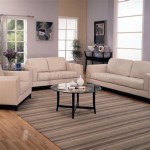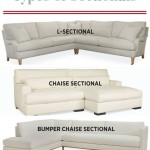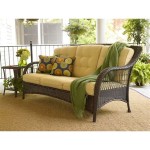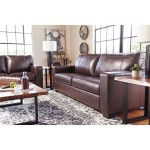Two-Tone Sofa Living Room Ideas: A Comprehensive Guide
The two-tone sofa has emerged as a significant design element in modern living room aesthetics. Its inherent versatility allows for the incorporation of diverse color palettes and textures, offering a dynamic alternative to the traditional, single-tone sofa. This article provides a comprehensive overview of two-tone sofa living room ideas, exploring various design approaches and practical considerations for integrating this statement piece into different living room styles.
The appeal of a two-tone sofa lies in its ability to simultaneously complement and contrast existing décor. It can serve as a focal point, drawing attention and defining the space, or subtly blend into the room's overall design scheme. The effective use of color, material, and form is crucial to achieving a cohesive and visually appealing living room environment. Careful planning and consideration of the room's dimensions, lighting, and existing furniture are essential for a successful implementation.
Color Harmony and Contrast
One of the primary considerations when selecting a two-tone sofa is the color palette. The choice of colors significantly influences the overall ambiance and aesthetic of the living room. A harmonious color scheme, involving shades that are close to each other on the color wheel, creates a sense of calmness and unity. For example, a sofa featuring a light gray body with darker gray cushions establishes a subtle and sophisticated look. This approach is well-suited for minimalist or Scandinavian-inspired living rooms.
Alternatively, a contrasting color scheme, utilizing colors that are opposite each other on the color wheel, generates a more vibrant and dynamic atmosphere. A sofa with a navy blue body and mustard yellow cushions, for instance, creates a bold and eye-catching statement. This approach works particularly well in eclectic or bohemian living rooms, where a mix of patterns and textures is already present. When using contrasting colors, it is important to maintain balance and avoid overwhelming the space. Using one color as the dominant hue and the other as an accent can help achieve this.
Beyond the color wheel, the specific shades chosen should also be considered in relation to the room's existing color scheme. The wall color, flooring, and other furniture pieces should complement, rather than clash with, the sofa’s colors. Neutral walls provide a versatile backdrop for a two-tone sofa, allowing the sofa to take center stage. If the walls are already painted with a bold color, it is advisable to select a sofa with more muted or complementary tones to avoid visual chaos.
Consider the impact of natural and artificial light on the colors of the sofa. Colors can appear different under varying lighting conditions. It is prudent to test color swatches in the living room under both daylight and artificial light before making a final decision. This will ensure that the chosen colors maintain their desired appearance throughout the day and night.
Material and Texture Considerations
The materials used in a two-tone sofa play a crucial role in its overall aesthetic and functionality. The combination of different textures can add depth and visual interest to the living room. For instance, a sofa with a leather body and fabric cushions offers a tactile contrast that is both sophisticated and comfortable. The choice of materials should also be informed by practical considerations, such as durability, ease of cleaning, and resistance to wear and tear.
Velvet is a popular choice for two-tone sofas, adding a touch of luxury and elegance. Its soft texture and rich color saturation create a visually appealing focal point. Velvet can be paired with other materials, such as linen or cotton, to create a more balanced and comfortable seating experience. However, velvet requires regular maintenance to prevent dust and stains.
Linen is another versatile option for two-tone sofas, offering a relaxed and casual look. Its natural texture and breathable qualities make it a comfortable choice for everyday use. Linen is also relatively easy to clean and maintain, making it a practical option for families with children or pets. Linen can be paired with materials such as leather or wool to add warmth and texture to the sofa.
Leather is a durable and sophisticated option for two-tone sofas. Its smooth texture and rich color variations add a touch of luxury to the living room. Leather is also relatively easy to clean and maintain, making it a practical choice for high-traffic areas. Leather can be paired with materials such as canvas or denim to create a more casual and relaxed look.
The texture of the sofa's materials should also complement the overall design style of the living room. A sleek and modern living room might benefit from a sofa with smooth, minimalist materials, such as leather or microfiber. A more rustic or bohemian living room might benefit from a sofa with textured materials, such as linen or burlap.
Design Styles and Two-Tone Sofas
The versatility of the two-tone sofa allows it to seamlessly integrate into a variety of design styles. Understanding how to adapt the sofa's design to complement the existing aesthetic is key to creating a cohesive and harmonious living room. This section will explore how two-tone sofas can be incorporated into several popular design styles.
Modern Minimalism: In a minimalist living room, the two-tone sofa can serve as a subtle statement piece, adding visual interest without overwhelming the space. Opt for a sofa with clean lines and a simple silhouette. Neutral colors, such as gray, white, and beige, are ideal for maintaining the minimalist aesthetic. Consider a sofa with a light gray body and darker gray cushions, or a white body with beige piping. The materials should be smooth and unadorned, such as leather or microfiber. Avoid overly decorative details or patterns.
Bohemian Chic: A bohemian living room embraces eclecticism and a mix of patterns, textures, and colors. A two-tone sofa in this style can be bold and playful, featuring vibrant colors and unconventional combinations. Consider a sofa with a patterned body and solid-colored cushions, or a combination of contrasting colors, such as teal and orange. The materials can be a mix of textures, such as velvet, linen, and macramé. Add throw pillows and blankets with different patterns and textures to enhance the bohemian feel.
Scandinavian Design: Scandinavian design emphasizes simplicity, functionality, and natural materials. A two-tone sofa in this style should be comfortable, understated, and functional. Opt for light and airy colors, such as white, gray, and light blue. Consider a sofa with a light gray body and white cushions, or a white body with natural wood accents. The materials should be natural and breathable, such as linen or cotton. Add throw pillows and blankets in soft, muted colors to create a cozy and inviting atmosphere.
Mid-Century Modern: This design style features clean lines, geometric shapes, and a focus on functionality. A two-tone sofa in this style can be a statement piece, showcasing the iconic designs of the mid-century era. Consider a sofa with a bold color, such as mustard yellow or teal, combined with a neutral color, such as gray or beige. The materials should be durable and comfortable, such as leather or tweed. Look for sofas with tapered legs and button-tufted detailing to capture the mid-century modern aesthetic.
Traditional Style: In a traditional living room, a two-tone sofa can add a touch of elegance and sophistication. Opt for classic colors, such as navy blue, burgundy, or emerald green, combined with neutral tones, such as beige or cream. Consider a sofa with a solid-colored body and patterned cushions, or a sofa with a tufted back and rolled arms. The materials should be luxurious and comfortable, such as velvet or linen. Add throw pillows and blankets in traditional patterns, such as floral or paisley, to complete the look.
Ultimately, the key to successfully integrating a two-tone sofa into any living room is to carefully consider the existing décor, the desired aesthetic, and the practical needs of the space. By carefully selecting the colors, materials, and design details, it is possible to create a living room that is both stylish and functional.

35 Best Stylish Functional Living Room Sofa Decor Ideas Parachute Blog

Small Living Room Solutions For Furniture Placement Layout Design Casual Rooms

8 Modern Sofa Set Designs For Living Room Designcafe

Sofa Colour Combinations Elevate Your Space Designcafe
:strip_icc()/leather-sofa-living-room-ideas-2-proem-studio-white-oak-bbcb9cff21384c118adb7d407a843ebc.jpeg?strip=all)
23 Living Rooms With Leather Sofas That Look Incredible

Pin On Condo Kitsch

Best Two Colour Combinations For Living Rooms By Livspace

House Home 30 Sofas That Prove Color Is What Your Living Room Missing
:strip_icc()/cdn.cliqueinc.com__cache__posts__83156__sofa-floor-plan-83156-1508554405538-main.700x0c-e9b3d6e567cc4c38801576bf39d9c8e1.jpg?strip=all)
The Living Room And Sofa Layout That Works Every Time

Two Sofas Double The Design Possibilities








